Chocolate:
Food
of the Gods.
Tracing the Path
of an Ancient Olmec
Delicacy All the Way
To Hershey's Kisses.
Christopher Columbus and the Great Age of Discovery
HIST 351 ~ Fall 2010
“Oh Pangloss!” cried Candide, “What a strange genealogy!
Was not the devil at the head of it [the creation of syphilis]?”
“Not at all,” replied the great man [Pangloss]; “it was a thing
indispensable; a necessary ingredient in the best of worlds;
for if the Spaniard had not catched, in an island of America,
this distemper, we should have had neither chocolate nor cochineal.”
— Voltaire, Candide
By Dr. Ronald Fritze
October 22, 2010
Chocolate is one of the pleasures of modern life. Enjoying a chocolate bar, a nice cup of hot chocolate, devil’s food cake, or some Hershey’s Kisses are very therapeutic activities for many people. We might even know these people as chocoholics. We might well be chocoholics ourselves!
Inexpensive, mass produced chocolate is a phenomenon of the mid-nineteenth century and the Industrial Revolution. That western society has chocolate at all is a product of the Age of Discovery and its Columbian Exchange of plants and animals.
From a Bitter Tropical Seed
Comes a Treat Desired by Man (and Monkey).
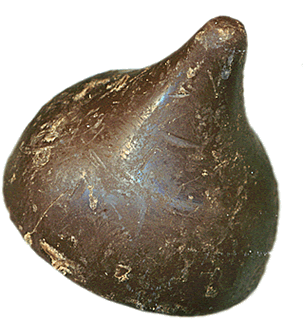 Chocolate comes from the nut of the Cacao tree (Theobroma cacao), which is a native plant of wet and tropical Central America. The Cacao tree can only grow within the equatorial band of 20° north and 20° south. Wild Cacao trees grow to about forty feet tall, while domesticated trees on plants are only about twenty feet tall. The Cacao tree produces nuts shaped and sized like a football. Its exterior is a hard shell, but inside is a white pulp that is soft, sweet, and good to eat.
Chocolate comes from the nut of the Cacao tree (Theobroma cacao), which is a native plant of wet and tropical Central America. The Cacao tree can only grow within the equatorial band of 20° north and 20° south. Wild Cacao trees grow to about forty feet tall, while domesticated trees on plants are only about twenty feet tall. The Cacao tree produces nuts shaped and sized like a football. Its exterior is a hard shell, but inside is a white pulp that is soft, sweet, and good to eat.
Both humans and monkeys have long broken open Cacao nuts to eat the interior pulp. Mixed-in with the pulp are bitter seed pods, and from these bitter seeds chocolate is made.
Cacao trees are not all alike. There are two basic varieties. One is the preferred Criollo tree. Its seed pods produce a cacao with a superior flavor. Criollo trees, however, are not all that hardy and are more finicky about where they will grow.
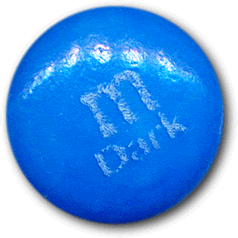 The other variety of the Cacao tree is Forastero. The Forastero tree is far hardier than the Criollo version, can be grown successfully in a wider variety of environments, and produces more nuts. But the flavor of the cacao seed pods is considered greatly inferior. Despite that culinary truth, most chocolate eaten today comes from Forastero plantations.
The other variety of the Cacao tree is Forastero. The Forastero tree is far hardier than the Criollo version, can be grown successfully in a wider variety of environments, and produces more nuts. But the flavor of the cacao seed pods is considered greatly inferior. Despite that culinary truth, most chocolate eaten today comes from Forastero plantations.
From the Hand of Man
Comes a Third Variety.
Thanks to the science of horticulture, there grows a third variety of Cacao tree called Trinitario, which is a hybrid of the Criollo and Forastero trees. Trinitario produces a better-flavored cacao than Forastero and its far hardier than Criollo.
At the end of the day, when time comes for a chocolate treat, Criollo cacao remains the epitome of chocolate flavor. Alas and alas, less than one percent of chocolate produced in the world today comes from Criollo seed pods.
Keep in mind, somebody way back then had to deduce that those bitter seed pods could be transformed into food. Here is where we humans demonstrated our superiority over the monkeys of the earthly realm. We figured out how to make chocolate edible and, as a testament to the brilliance of our species, very pleasing to the taste buds. The dumb monkeys didn’t.
The Olmec Recipe:
Ferment, Dry, Roast, and Grind
The first people to figure out how to make the seed pods of cacao into something edible were the Olmecs of the Gulf Coast of
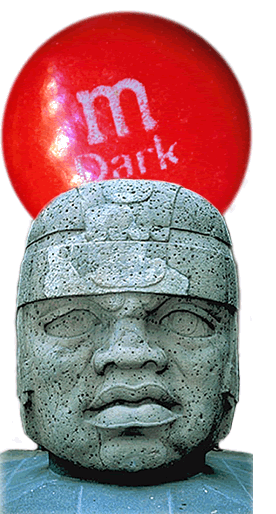 Mexico. The Olmecs created the earliest civilization in Central America, flourishing from 1500-400 B.C. During their rise to greatness, they developed the method of processing cacao that is still basically used today. It is a four-step process: ferment the seeds, dry them for a couple of weeks, roast them, and then grind them up into cacao powder.
Mexico. The Olmecs created the earliest civilization in Central America, flourishing from 1500-400 B.C. During their rise to greatness, they developed the method of processing cacao that is still basically used today. It is a four-step process: ferment the seeds, dry them for a couple of weeks, roast them, and then grind them up into cacao powder.
We know very little about the place of cacao in Olmec society. The surviving evidence consists of a few depictions of chocolate production and chocolate drinking in Olmec art. But the Olmecs did pass the secret of chocolate on to their neighbors and successors, including the Maya. Evidence of Maya usage of cacao is more common. And the place of chocolate in Maya society appears to be very similar to its place in Aztec society.
For the ancient peoples of Central America, cacao was a food of the gods.
In pre-Columbian Central America, cacao was taken as a drink. Cacao powder was mixed with water along other flavorings of an herbal or spice-like nature such as allspice and popcorn flower. Mayas and Aztecs also included chili peppers in their treats, which to us would be the same as adding a little Tabasco sauce to a chocolate milk shake. But it worked for them.
They sometimes but not usually sweetened their chocolate with honey. Pre-Columbian societies did not possess sugar, which is a plant of the Eastern Hemisphere. Generally, chocolate was consumed as an after-dinner drink, an exclusive beverage confined to the tables of the elite of Maya and Aztec society. Mayans and Aztecs also liked to froth their chocolate by pouring it from one container to another over and over from a height. The froth was considered to be a delicacy. It would be the equivalent of modern Americans thinking that the head of a beer is the best part.
A Hyper-Energy Drink
For Soldiers on the March
The only other people who got to drink chocolate were soldiers. We know that some people today eat a chocolate bar to get an energy boost. Back then, the caloric value of pre-industrial chocolate is quite high, so the chocolate of the Maya and the Aztecs
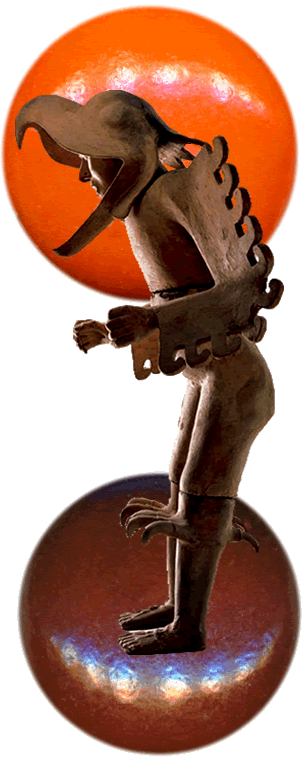 was the equivalent of a hyper-energy drink. It could serve as a one-course meal for soldiers on the march. All of which meant that cacao seed pods were very valuable and were actually used as currency in pre-Columbian and early colonial Spanish societies. Cacao seed pods also served as trade goods --evidence of chocolate drinking has been found in ancestral Pueblo pots from the Southwest of the United States.
was the equivalent of a hyper-energy drink. It could serve as a one-course meal for soldiers on the march. All of which meant that cacao seed pods were very valuable and were actually used as currency in pre-Columbian and early colonial Spanish societies. Cacao seed pods also served as trade goods --evidence of chocolate drinking has been found in ancestral Pueblo pots from the Southwest of the United States.
Recently I enjoyed an opportunity to sample a couple of Maya recipes for drinking chocolate at the meeting of the Society for the History of Discoveries in Santa Fe, New Mexico. I knew that the cacao was mixed with water, so I was expecting something like coffee. Actually, the chocolate drinks were definitely of a color similar to the batter for a chocolate cake but much runnier. And the Maya chocolate was not watery like coffee. In consistency, it was somewhat like a heavy cream or a milk shake that is starting to get warm.
As for the taste, I could detect the cacao, although it was not a strong cacao taste. Otherwise, it was an alien experience, so alien that I cannot think of a good analogy. Based on my experience with Maya chocolate, I’m sure the common people of that ancient civilization were not missing out on too much if they could not afford to drink chocolate. Thank God for giving us Hershey’s!
What Wonders Might Be Unleashed
By the Powers of this Mysterious Drink?
When Cortes and his Spanish expedition reached the lands of Central America, their encounters with things new included chocolate. It became a mysterious and potent novelty. Initially, the Spanish were rather conservative about adopting any native foods in line human nature. But hunger sometimes drove them to experiment with cacao, especially since chocolate did have the virtue of being a meal in itself. The conquistador chronicler Bernal Diaz del Castillo described the Aztec emperor Montezuma drinking chocolate and provides us with another motive for Spanish willingness to try chocolate. As Diaz described it,
. . . and from time to time they [women of the Aztec court] brought him [Montezuma] some cups of fine gold, with a certain drink made of cacao, which they said was for success with women, and then we thought no more about it; but I saw that they brought more than 50 jars of prepared good cacao with its foam, and he drank of that; and that the women served him drink very respectfully . . . .
So, from early on chocolate acquired a reputation, albeit a false one, as an aphrodisiac. The Spanish were drinking it on a regular basis by 1525. They began adding sugar to their chocolate drinks by the 1530s but very sparingly by our standards. Their application of sugar to their chocolate drink was in the nature of a condiment, akin to how modern people apply salt to French fries. Remember, sugar was still expensive at this time. The Spanish also added other flavors to their chocolate such as roses, cinnamon, black pepper (analogous to the chili peppers), anise, and almonds.
Many Spanish Women Fell for the Drink,
But Others Weren't So Enthusiastic.
The Spanish, particularly Spanish women, enthusiastically adopted the drinking of chocolate. They also adopted the Native American practice of foaming or frothing their chocolate drinks, but instead of creating the foam by pouring, they invented a beater or stirring stick called a molinillo. Not everyone found the early Spanish version of drinking chocolate to their taste. The Jesuit missionary Jose de Acosta described cacao this way,
“The chief value of this cocoa is a beverage that they make called chocolate, which is prized to the point of folly in that land. It is nauseating to some who are not accustomed to it, for it has froth on top and a sort of lees [dregs], which indeed require a good deal of effort to drink. Yet it is the most prized drink and is offered to noblemen as they pass through their lands. Both Indians and Spaniards, and especially Spanish women who have grown accustomed to the land, adore their black chocolate. They say that this chocolate is made in different forms and temperatures: hot and cold and lukewarm. They often put spices in it and much chile; they also make it in the form of paste, and say that it is good for the chest and stomach and against catarrh. No matter what its uses, those who have not been brought up to it do not much care for it.”
After sampling an early Spanish recipe at the Society for the History of Discoveries meeting, I agree with Father Acosta. My drink had not been frothed, and I surmise that the consistency of the Spanish chocolate was identical to the Maya. I could still pick up the cocoa taste and there was a hint of sweetness. That said, I will stick with hot chocolate made from milk and appropriate amounts of sugar.
Drinking chocolate made its way to Europe where it was very popular in Spain, Italy, and France during the seventeenth and
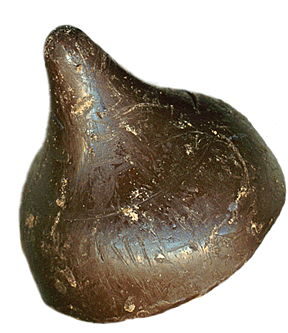 eighteenth centuries. Keep in mind, for most of human history, people did not have safe non-alcoholic beverages. Drinking the water could be dangerous. Chocolate drink along with coffee and tea provided Europeans with safe, non-alcoholic beverages. Initially, all three of these commodities were expensive and confined to the elite and well-to-do. Tea was the most expensive, but the price came down over time. Eventually chocolate, coffee, and teas came to be enjoyed by the common people.
eighteenth centuries. Keep in mind, for most of human history, people did not have safe non-alcoholic beverages. Drinking the water could be dangerous. Chocolate drink along with coffee and tea provided Europeans with safe, non-alcoholic beverages. Initially, all three of these commodities were expensive and confined to the elite and well-to-do. Tea was the most expensive, but the price came down over time. Eventually chocolate, coffee, and teas came to be enjoyed by the common people.
Chocolate was popular in Catholic countries because it could be drunk during a fast, although some sterner priests disapproved or forbade the practice. By contrast, in northern Europe and Protestant countries coffee was the preferred drink, although English coffee houses also served teas and chocolate. Being by far the cheapest, coffee was the most popular.
The nineteenth century saw two crucial developments in how chocolate was produced. One was the invention in 1828 of an efficient process for removing cocoa butter from dried chocolate. Defatted chocolate came to be known as Dutch chocolate because the inventor of the process was a Dutchman named Coenrad Johannes von Houten. The second development was the creation of milk chocolate by the Swiss Henri Nestle in 1867, hence the name Swiss chocolate.
In England, mass market chocolate began when a medical doctor named Joseph Fry established the chocolate company J. S. Fry & Sons in Bristol in the middle of the eighteenth century. That company was surpassed by the enterprising John Cadbury of Birmingham, who entered the chocolate business in 1824 with the goal of producing a popular alternative to strong spirits.
In America, Milton Hershey of Pennsylvania entered the chocolate business in 1893 as a result of seeing European chocolate-making techniques at the World’s Columbian Exposition in Chicago. The rest is history — and a delicious part of the legacy of the Columbian Exchange.
For further reading:
 Sophie D. Coe and Michael D. Coe. The True History of Chocolate (New York: Thames and Hudson, 1996).
Sophie D. Coe and Michael D. Coe. The True History of Chocolate (New York: Thames and Hudson, 1996).
 Wolfgang Schivelbusch. Tastes of Paradise: A Social History of Spices, Stimulants, and Intoxicants (New York: Vintage Books, 1993).
Wolfgang Schivelbusch. Tastes of Paradise: A Social History of Spices, Stimulants, and Intoxicants (New York: Vintage Books, 1993).
Christopher Columbus and the Great Age of Discovery
HIST 351 ~ Fall 2010
Christopher Columbus and the Age of Discovery
is an internet learning resource directed by Dr. Ronald Fritze,
Dean of the College of Arts and Sciences
at Athens State University in Athens, Alabama.
The Age of Discovery web project
is part of the CornDancer family
of open-access, non-commercial, developmental websites.
|

